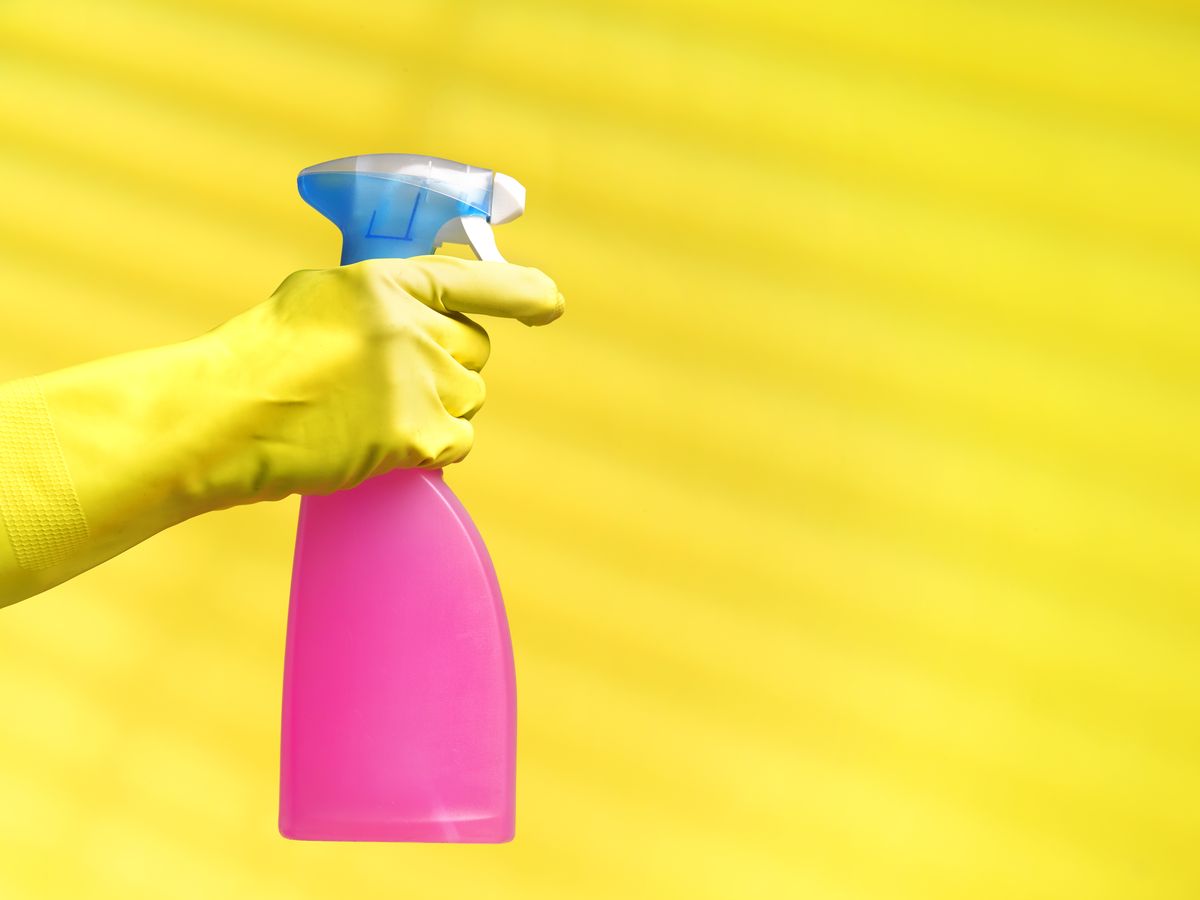How to Keep Your Home Sanitary: Everyday Cleaning Tips for Defrosted and Cleaned Every Few Months
How to Keep Your Home Sanitary: Everyday Cleaning Tips for Defrosted and Cleaned Every Few Months
Blog Article
Comprehending the Demand for Completely Decontaminating and Sanitizing Regularly Touched Surfaces in High-Traffic Areas
In the world of public health and safety and security, the precise sanitation and sanitization of regularly touched surfaces in high-traffic areas stand as extremely important steps in protecting against the spread of hazardous virus. The significance of this method expands much beyond mere tidiness, diving into the realm of condition prevention and community wellness. By discovering the numerous facets of surface disinfection, from the dangers connected with overlooking cleansing methods to the effective methods that can be utilized, a more clear understanding arises of the essential role these practices play in protecting public health and wellness. As we browse this conversation, it comes to be evident that the implications of extensive surface area sanitation reverberate not only within the confines of a certain setting yet additionally reverberate on a more comprehensive range, influencing the health and wellness of individuals throughout diverse communal setups.
Relevance of Surface Area Sanitation
Highlighting the thorough disinfection of high-traffic surface areas is vital in maintaining a hygienic environment and protecting against the spread of damaging pathogens. High-touch surfaces such as door handles, light buttons, lift switches, and counter tops act as breeding grounds for infections and bacteria. Regular disinfection of these surfaces is critical to minimize the danger of contamination and transmission of ailments.
By executing a robust disinfection method, organizations and businesses can produce a much safer atmosphere for employees, clients, and site visitors. Appropriate surface sanitation not only minimizes the spread of contagious illness however additionally instills self-confidence in the sanitation and safety of the facilities. This aggressive technique shows a commitment to health and health, which is especially vital in high-traffic locations where the chance of direct exposure to microorganisms is increased.
Furthermore, surface area disinfection plays an essential role in overall infection control strategies. Combined with hand hygiene techniques, putting on masks, and maintaining physical distancing, comprehensive sanitation of high-touch surface areas develops an extensive protection versus the transmission of hazardous microorganisms. Focusing on surface area disinfection is an important part of an all natural method to health and wellness and safety in shared spaces.
Dangers of Disregarding Cleaning Practices
Neglecting thorough disinfection of high-traffic surfaces substantially increases the danger of microbial and viral contamination, presenting a serious hazard to the health and wellness of people frequenting these areas. Failure to apply proper cleaning practices can result in the build-up and spread of damaging pathogens, including microorganisms and infections, on regularly touched surface areas such as doorknobs, handrails, elevator switches, and countertops.

In addition, disregarding the importance of extensive cleansing not only endangers the wellness of individuals but also undermines efforts to keep a clean and sanitary setting. It is vital to acknowledge the value of appropriate sanitation procedures in preventing the spread of infections and guarding public health.
Reliable Disinfection Techniques
To keep optimum cleanliness and decrease the danger of contamination on high-traffic surface areas, employing reliable sanitation techniques is important. Among the most efficient and typical sanitation methods is utilizing chemical anti-bacterials. These products can vary in stamina and make-up, with some targeting particular virus like microorganisms or viruses. It is crucial to comply with the maker's guidelines for proper dilution, get in touch with time, and air flow when making use of chemical anti-bacterials to ensure their effectiveness - defrosted and cleaned every few months.
Another effective method is the usage of UV-C light. UV-C light has been revealed to be reliable in eliminating a vast selection of microbes by interrupting their DNA framework, hence stopping them from duplicating. Nevertheless, it is important to make use of UV-C light effectively, making certain that the proper strength and exposure time are related to achieve the desired sanitation outcomes.
Additionally, utilizing heavy steam cleaning as a disinfection technique can be extremely efficient, specifically on surface areas that are heat-resistant. Steam can permeate permeable surfaces and kill bacteria, viruses, and various other virus effectively. When making use of heavy steam cleansing, it is necessary to ensure that the surface area gets to the required temperature for an enough quantity of time to guarantee correct disinfection.
Impact on Public Health
The upkeep of high requirements of cleanliness and disinfection on high-traffic surfaces plays a crucial duty in protecting public wellness. Frequently touched surfaces in locations with high footfall, such as doorknobs, handrails, lift switches, and restroom facilities, act as breeding grounds for dangerous pathogens. Failing to appropriately disinfect these surfaces can cause the rapid spread of infectious illness within areas. By executing thorough disinfection procedures, the danger of transmission of infections, microorganisms, and other germs can be considerably minimized.
Effective sanitation practices not only protect people from falling ill but also contribute to the overall well-being of society. Public health and wellness authorities highlight the value of keeping tidy environments to avoid break outs and have the spread of diseases. In high-traffic areas like flight terminals, schools, medical facilities, and public transport systems, the influence of strenuous sanitation steps can not be understated. Focusing on the sanitization of regularly touched surfaces is a proactive method to advertising public wellness and improving the security of people in common areas.
Carrying Out Normal Cleansing Protocols
Immediately instituting and sticking to a regular timetable of cleansing procedures is vital for preserving the tidiness and security of high-traffic surfaces. Routine cleaning protocols are essential in stopping the buildup of bacteria and microorganisms on often touched surfaces, particularly in locations with high foot read here website traffic. By carrying out a systematic technique to cleansing, companies can successfully lower the risk of condition transmission and develop a much healthier atmosphere for employees, consumers, and the general public.
To establish a reliable cleaning routine, it is crucial to identify high-traffic areas that need constant interest. These areas might consist of doorknobs, hand rails, lift buttons, washroom centers, and common tools. Executing a routine cleaning program that targets these surface areas numerous times a day can significantly decrease the spread of dangerous microorganisms and infections.
Moreover, utilizing suitable cleaning agents and disinfectants is crucial to making certain that surface areas are extensively disinfected. Normal training of cleansing team on correct cleansing strategies and the relevance of adherence click over here to the cleansing timetable is additionally crucial in preserving a sanitary setting. By focusing on constant cleaning procedures, organizations can promote the wellness and well-being of people that communicate with these high-traffic surfaces.

Final Thought
In final thought, it is essential to focus on detailed disinfection and sanitization of frequently touched surface areas in high-traffic areas to stop the spread of dangerous virus and keep public wellness. Disregarding correct cleaning practices can increase the danger of contamination and transmission of conditions. By carrying out routine cleaning protocols and using reliable disinfection techniques, we can create a more secure atmosphere for everybody (Clear Out Any Clutter). It is essential to acknowledge the value of maintaining tidy surfaces in high-traffic areas to make certain the wellness of the community.
In the world of public health and wellness and safety, the thorough sanitation and sanitization of often touched surface areas in high-traffic areas stand as paramount actions in protecting against the spread of harmful virus. By checking out the numerous elements of surface sanitation, from the risks associated with disregarding cleansing procedures to the effective techniques that can be used, a clearer understanding emerges of the important role these methods play in protecting public health and wellness.Furthermore, using heavy steam cleansing as a disinfection approach can be extremely effective, especially on surface areas that are heat-resistant. When using vapor cleaning, it is crucial to guarantee this link that the surface gets to the required temperature for an enough amount of time to guarantee appropriate disinfection.
In verdict, it is critical to prioritize thorough disinfection and sanitization of often touched surface areas in high-traffic areas to stop the spread of harmful virus and maintain public health.
Report this page